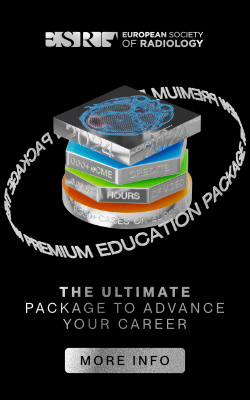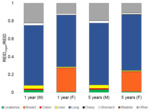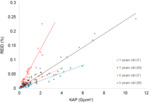Congress:
EuroSafe Imaging 2020
Keywords:
Performed at one institution, Not applicable, Retrospective, Cancer, Biological effects, Radiation safety, Angioplasty, Fluoroscopy, Paediatric, Interventional vascular, Cardiac, Action 7 - Radiation protection of children
Authors:
A. Karambatsakidou, A. Fransson-Andreo, E. Kvanta, C. Odenberg Storrank, G. Poludniowski
DOI:
10.26044/esi2020/ESI-04717
Conclusion and recommendations
The estimated risk for exposure-induced cancer death (REID) varied between 0.3 and 240 per 100000 patients for the two subgroups (1 year and 5 years) and was in general higher in female patients (table 1). The organs contributing most to the risk were the lungs and the (female) breast (figure 1).
The linear correlation of REID versus KAP for different age groups and gender was good (figure 2), indicating that the estimated conversion coefficients are not dependent on type of interventional procedure. Further, the conversion coefficients, CCREID:KAPs=REID/KAP, pointed towards lower values with increasing age, and a factor 2-3 higher for female patients (table 1).
The introduction of CCREID:KAP divided in age and gender highlights the importance of both gender and age division and can be used in epidemiological studies concerning paediatric cohorts and also as an advisory tool to the interventionist in order to communicate the cancer risk to the patient/parent, according to the directive 2013/59/Euratom [5].
However, cancer risks are not intended for use in decision making for individual patient cases and are best applied to subgroups.




